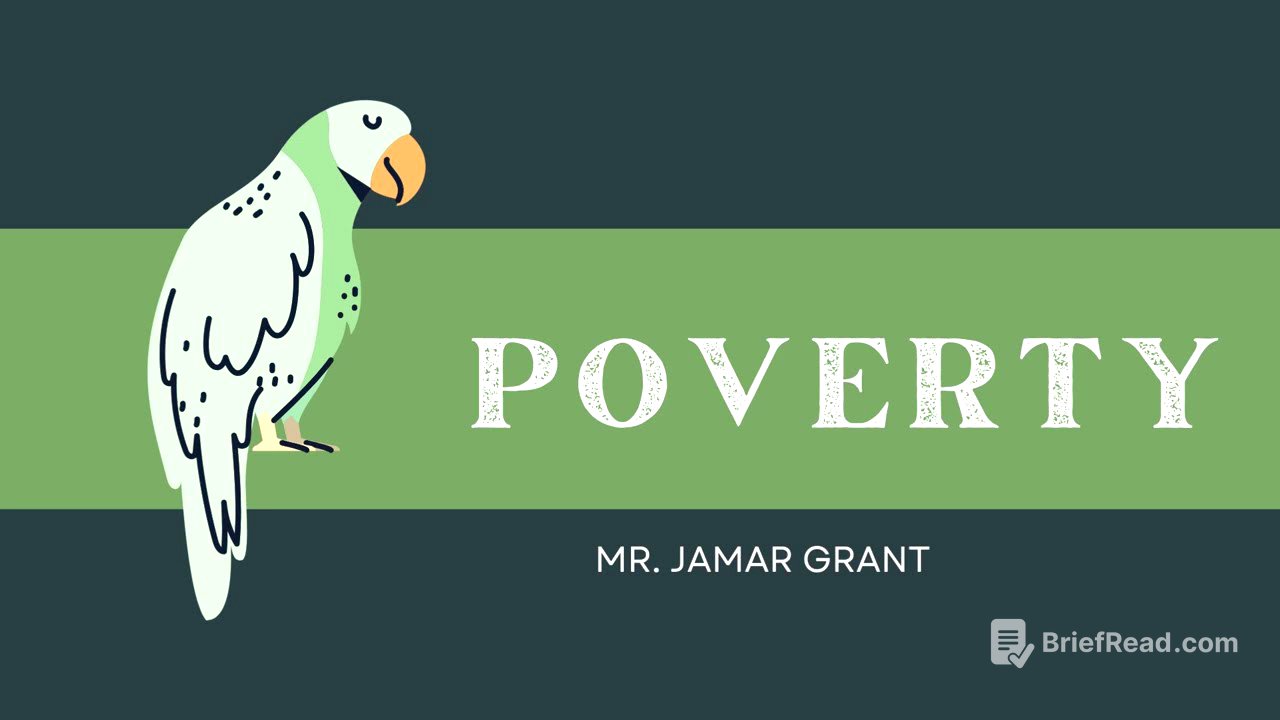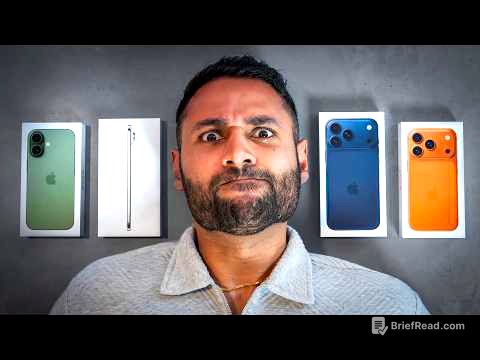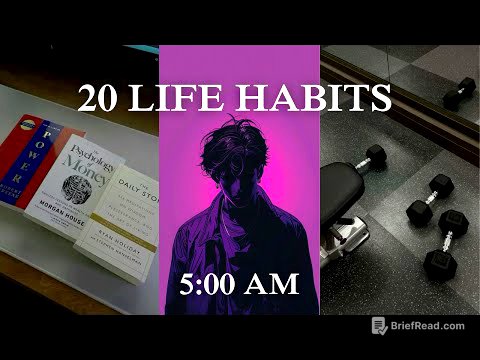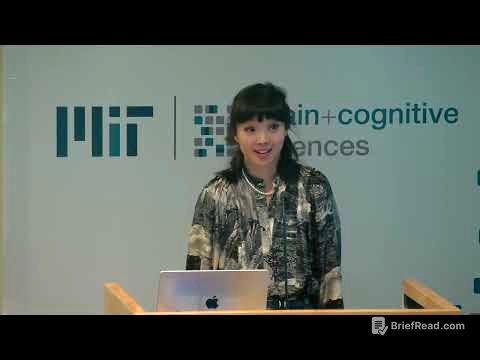TLDR;
This video provides a detailed explanation of poverty, starting with a definition from the Caribbean Development Bank (CDB) and then discussing five different types of poverty: absolute, relative, subjective, urban, and chronic. It highlights the key characteristics of each type, providing examples to illustrate the concepts and relating them to real-world scenarios, particularly within the context of Caribbean societies like Jamaica and Barbados.
- Definition of poverty by the Caribbean Development Bank (CDB)
- Five types of poverty: absolute, relative, subjective, urban, and chronic
- Examples and characteristics of each type of poverty
Definition of Poverty [0:29]
The Caribbean Development Bank (CDB) defines poverty as the state where individuals or groups cannot meet their basic needs for survival and development, lack access to essential services, and are excluded from participating in society. This definition emphasizes three key aspects: basic needs, access to services, and social inclusion, highlighting that poverty is not just about lacking necessities but also about being unable to fully engage in community life.
Absolute Poverty [1:42]
Absolute poverty, also known as subsistence poverty or basic needs poverty, is a condition where individuals cannot meet their most fundamental needs such as food, clean water, shelter, and healthcare. This type of poverty focuses solely on the inability to secure the bare necessities required for survival. If a person lacks these basic provisions, they are considered to be living in absolute poverty, a state that is directly tied to their physical survival.
Relative Poverty [2:56]
Relative poverty occurs when individuals can meet their basic needs but are considered poor compared to the average standard of living in their society. People experiencing relative poverty may have access to basic necessities but lack the resources to afford additional comforts or opportunities, such as education or internet access. For example, a worker in Trinidad who earns enough to cover basic needs but cannot afford education or internet is considered relatively poor.
Subjective Poverty [4:56]
Subjective poverty is the feeling of being poor based on personal expectations and comparisons, often influenced by social media or peer groups. This type of poverty is not necessarily about lacking basic needs or the ability to live comfortably, but rather about feeling deprived when comparing one's lifestyle to others. For instance, a teenager in Barbados might feel poor because they cannot afford the latest smartphone, even if they have their basic needs met.
Urban Poverty [6:27]
Urban poverty is poverty experienced in cities or urban centers, often characterized by overcrowding in informal settlements and high living costs. This type of poverty is linked to rural-urban migration, where people move to cities seeking better opportunities but end up in urban slums with inadequate housing, poor sanitation, and limited access to public services. Urban unemployment and underemployment further exacerbate these conditions, leading to the creation of inner-city ghettos with poor infrastructure.
Chronic Poverty [9:16]
Chronic poverty refers to long-term and persistent poverty that extends over an extended period, often across generations. This type of poverty is characterized by the intergenerational transmission of poverty, where families remain in poverty for multiple generations due to factors such as persistent lack of access to quality education, healthcare, and employment opportunities. Chronic poverty is often prevalent in rural areas, where a culture of survival rather than advancement is passed down through generations.









